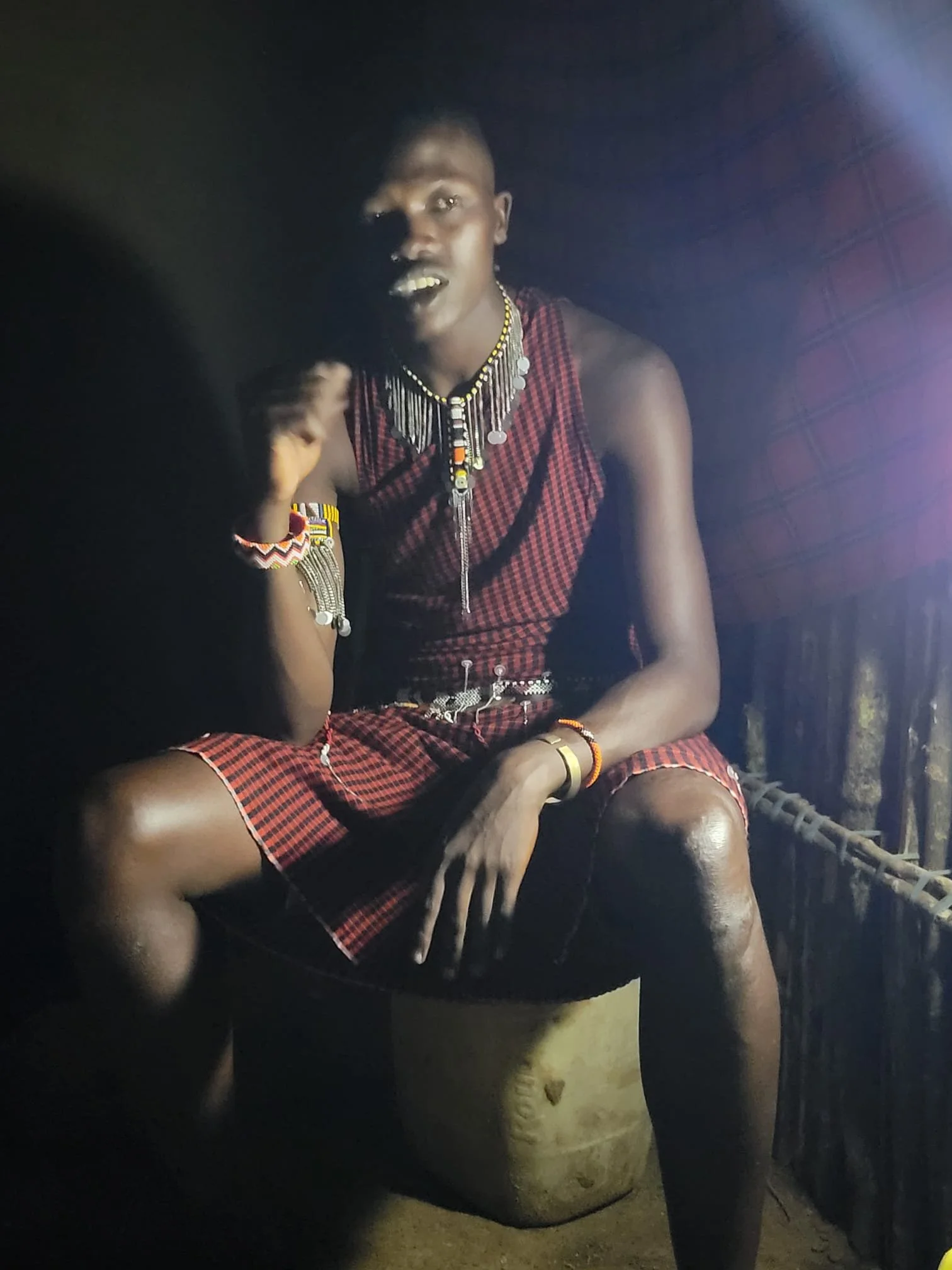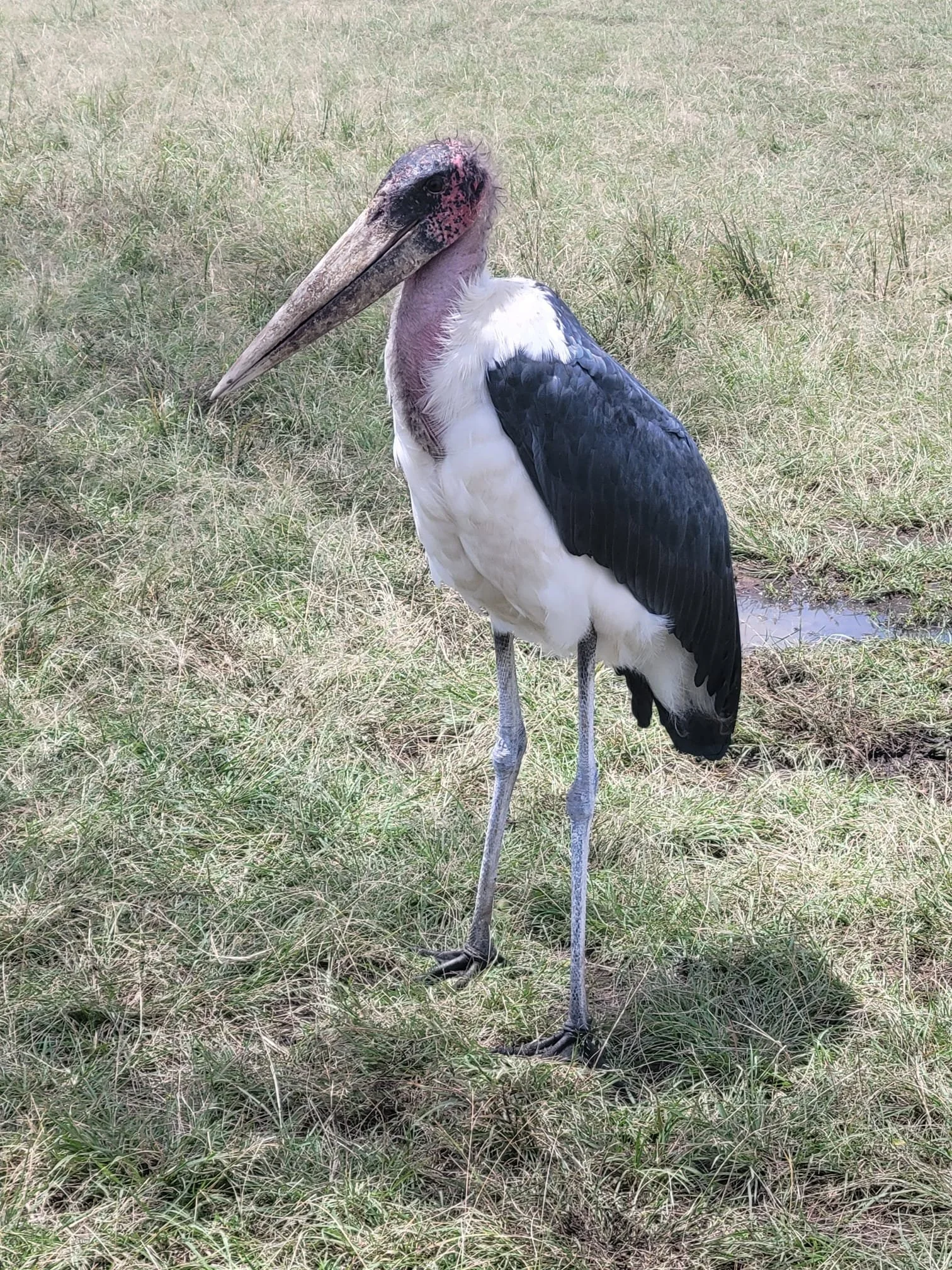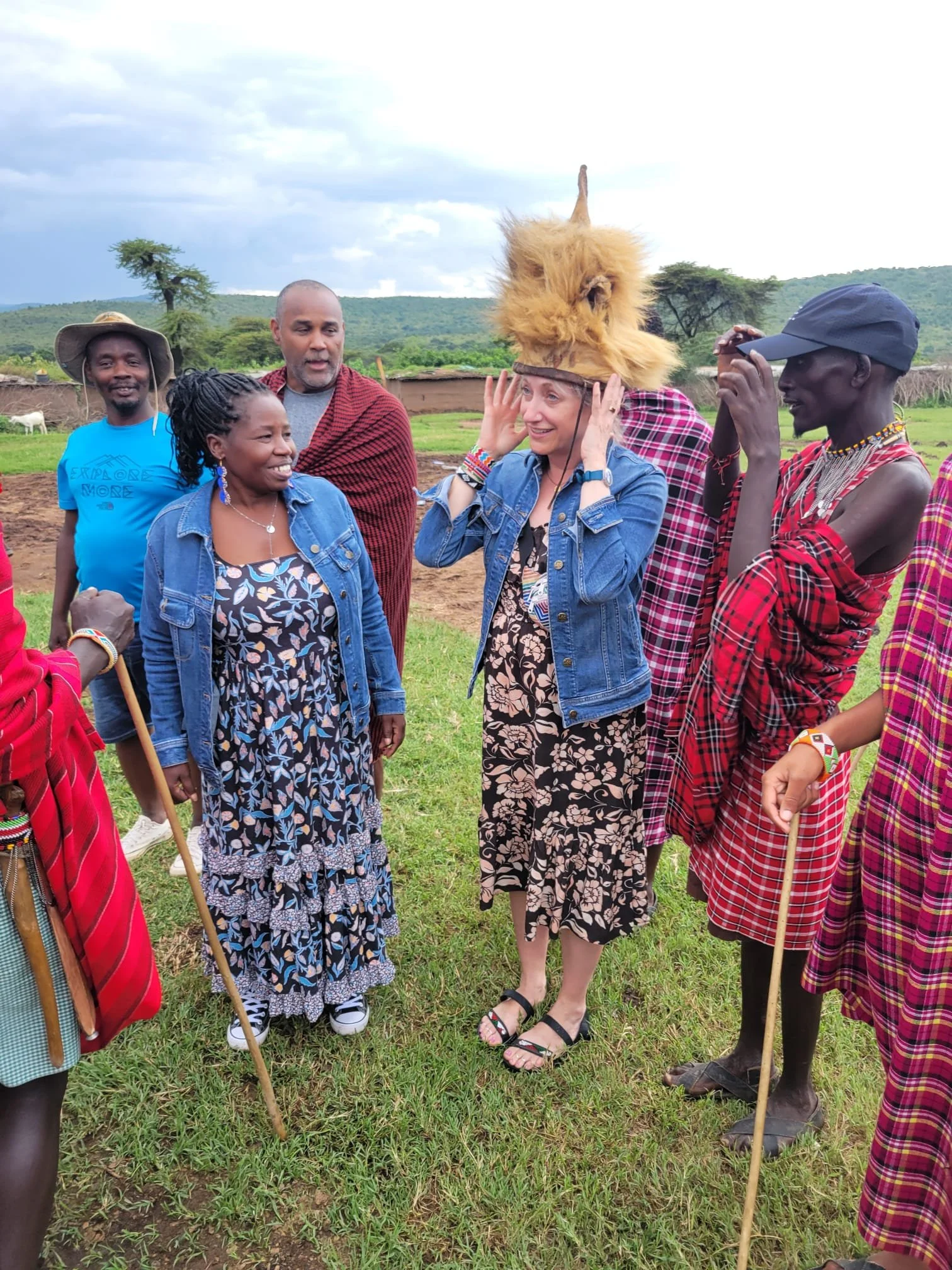Boma + Safari, part 1
Toward the end of our trip, we took a four-day trip to Maasai Mara: two days driving, two days on safari. It was a very rewarding trip. Thomas hires a Maasai guide for the trip. They have lines of communication that the regular drivers don’t have access to. In addition, the Maasai guides know every little pathway in the park. This was very handy this trip, as it was muddy and our two-wheel-drive vehicle wouldn’t have got us some places without the knowledge of our guide, Letipat. More on that later.
One of the “hidden gems” of safaris is the birds. People see the ostriches and some other bigger birds. But most visitors’ focus is typically on mammals. We’ve been on enough safaris that we tend to notice some of the animals and sights that others drive right by.
Above is a clacker bird. I’m sure it has another name, but it got this one by the sound its beak makes when eating. Several of these guys joined us for lunch.
We spent one afternoon looking for rhinos. We didn’t see any. But we saw some spectacular landscape and several interesting birds. The guys above and below were part of that.
One of the options with some of the Maasai guides is to visit their boma. The boma is the traditional home for a family. Letipat is part of a family of about 200 living in one boma. All residents are either the descendents of Letipat’s grandfather, or women who married into the family. He has 7 wives. The permission to take wives is granted by the elders, based on individual circumstances, such as their ability to support them.
The boma is a series of homes and livestock pens, inside a roughly circular fence of thorny bushes and branches. Each family will have its own entrance, all of which are gated off at night with more branches. The fence keeps predators out and they bring all the livestock in at night.
Below is Letipat. The first picture on this post is also him, inside his home. They use fire, phones, and solar lamps for light inside the homes. The homes last 7 years, before they destroy them and build a new one. The women in the family are the builders.
It’s an extremely patriarchal society. I’ve posted about the forced marriages previously. In some areas, FGM is still practiced, although it is illegal in Kenya.
Below, Claudia wears Letipat’s lion-mane hat. It is made from a real male lion.
When young Maasai men come of age, they undergo a ritual circumcision. In the more traditional areas, they also go into the bush to kill a male lion. This isn’t quite as mano-a-mano as it sounds. For Letipat, it was a group of 40 age-mates who went in together to kill one lion. Letipat was the first to stab the lion, which are killed with the traditional knives like the one on Letipat’s belt above.
Since Letipat was the first to stab the lion, he is designated to be a chief in the future, when his time comes. It’s unclear when that will be or how many are ahead of him.
The lion hunting has been curtailed in more recent years due to the reduction of the lion population.
We were treated to a traditional Maasai welcoming dance. This includes jumping. The object is to get maximum height. The Maasai men get impressive height on their jumps.
Guests are often encouraged to participate. Sean obliged. I’ll just say his retirement will allow him ample time to work on improving his vertical jump height, and leave it at that.
Some of the women also performed songs for us.
Below is a typical home inside the boma. As I said, they last 7 years. After that time, the termites are winning out over the repair work. Each home takes two months to build. I’m not sure how many they can be working on at once.
In addition to home-building, the women are responsible for cooking, cleaning, shopping, farming, child-rearing, and typically making bead jewelry for sale.
Many parts of the Maasai tribe also practice ritual scarification. This family doesn’t appear to. But we see it daily with the kids and adults we interact with.
Below is a friend who was observing our tour.
Back to animals.
Zebras are often very common in many of the parks. But this time of year there aren’t that many in Maasai Mara. The great migration from Serengeti to Maasai Mara happens in June/July. Until then, there won’t be many zebras or wildebeest on the Maasai Mara side of the river.
Wildebeest and zebras tend to herd together, for mutual benefit. The zebras have more acute hearing, sight, and smell. So they react quicker to predators. But the wildebeest are faster.
So the zebras benefit from reacting more quickly and briefly leaving the wildebeest as the easier prey to attack. They get a short-term survival advantage. The wildebeest benefit from the early warning system and get a long-term advantage. Both have a higher survival rate from the relationship.
Below is a warthog. They are pretty common and fun to watch. Their running pace is a very bouncy trot. Note the adult below is digging for insects from his knees. Their necks aren’t flexible enough to dig from standing.
Above is a topi. They have a very unique coloration with the bluish patches on the back hip and chest.
They are pretty common year-round at Maasai Mara.
I’ll note that I’m not using the more common spelling of the park name, “Masai Mara.” The park land historically belongs to the Maasai tribe, and the park is named after them. The British colonists dropped an “a” in the name to make it more accessible. I prefer the more culturally accurate name.
Above is a Thompson’s gazelle. They are relatively small, but very fast, agile, and beautiful.
Below, some of the less popular animals on the Mara. First is a jackal. Second is a spotted hyena. Both are dangerous hunters, especially in packs. And both will scavenge.
The hyenas are also particularly ugly animals. Basically jaws with legs. And shaped to tunnel into large prey, once killed.
We saw a surprising number of giraffes this trip. Well over 50. We always see some, but not 50. The darker one in front is a male. He’s making sure we aren’t a threat to his harem, which was on both sides of the road. I like his swishing tail.
And finally, a crocodile in the Mara river. This is the river the wildebeest cross in the great migration. We’ve all see videos on the huge numbers crossing and the crocodiles picking some off in the process. Below is one of the culprits, trying to look innocent.




















